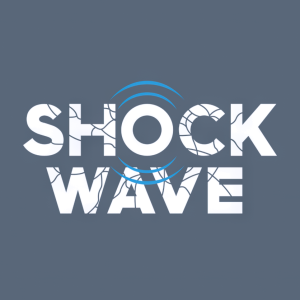Shockwave Reducer Demonstrates Consistent, Positive Results in ‘Real-World’ Study
Six-Month Results from REDUCER-I Trial Add to Positive Evidence of the Coronary Sinus Reducer to Treat Refractory Angina
SANTA CLARA, Calif., April 08, 2024 (GLOBE NEWSWIRE) -- Shockwave Medical, Inc. (NASDAQ: SWAV), a pioneer in the development and commercialization of transformational technologies for the treatment of cardiovascular disease, today announced that investigators presented six-month data from the full population of the REDUCER-I study, alongside interim long-term follow-up results to three years. These findings confirm the positive, ‘real-world’ outcomes of Shockwave Reducer, a novel technology for the treatment of refractory angina. Results were presented earlier today at the 73rd Annual Scientific Sessions of the American College of Cardiology in Atlanta, GA.
REDUCER-I is a post-market, multi-center, observational study designed to collect long-term outcomes on Shockwave Reducer in a large, ‘real-world’ population of 400 patients. The lead enrollers of the study were Drs. Stefan Verheye1, ZNA Middelheim Hospital, Antwerp, Belgium, Tim van de Hoef, University Medical Center Utrecht, Utrecht, Netherlands, and Ranil de Silva, Royal Brompton and Harefield Hospitals, London, United Kingdom.
The primary effectiveness endpoint for the study was the percentage of patients experiencing improvement in their symptoms of angina defined as a reduction in Canadian Cardiovascular Society (CCS) grade at six months compared with baseline. The primary safety endpoints were the rate of device- and/or procedure-related periprocedural serious adverse events (SAEs) and major adverse cardiac events (MACE) up to 30 days post implant.
Six-month results demonstrated an improvement in ≥1 CCS class in
“Results from the REDUCER-I study continue to demonstrate the safety and effectiveness of Shockwave Coronary Sinus Reducer as a novel therapy for refractory angina,” said Dr. Verheye. “We observed consistent reduction in symptoms of refractory angina and improvements in quality of life, results which align with those from the COSIRA study, previously published in The New England Journal of Medicine, in a challenging patient cohort characterized by high rates of cardiovascular risk factors and coexisting comorbidities for whom there have historically been no other treatment options.”
COSIRA-II, a US IDE double-blind randomized sham-controlled clinical trial, is currently enrolling patients to evaluate further the safety and effectiveness of Shockwave Reducer for the treatment of patients with refractory angina and no conventional revascularization options. Results from COSIRA-II are intended to support the regulatory filing for US FDA approval of Shockwave Reducer. Shockwave Reducer is an investigational device, limited by U.S. law to investigational use.
Additional Reducer Data Presented At ACC
In a separate late-breaking clinical trial session at ACC, Michael Foley, MD, National Heart and Lung Institute, Imperial College, London, UK, presented data from the ORBITA-COSMIC trial (Principal Investigator Dr. Rasha Al-Lamee, MD PhD), a randomized, placebo-controlled, double-blind, multicenter trial investigating the efficacy of Shockwave Coronary Sinus Reducer. The study confirmed symptomatic relief from angina over time in patients that had received Reducer. Although the trial missed the primary imaging endpoint of myocardial blood flow assessed by magnetic resonance imaging, there was evidence of redistribution of blood flow to the subendocardial ischemic regions, supporting the putative mechanism of action of Shockwave Reducer. ORBITA-COSMIC provides additional evidence for the use of Reducer as an additional therapeutic option for patients with refractory angina, documented myocardial ischemia and no option for conventional revascularization.
About Shockwave Medical, Inc.
Shockwave Medical is a leader in the development and commercialization of innovative products that are transforming the treatment of cardiovascular disease. Its first-of-its-kind Intravascular Lithotripsy (IVL) technology has transformed the treatment of atherosclerotic cardiovascular disease by safely using sonic pressure waves to disrupt challenging calcified plaque, resulting in significantly improved patient outcomes. Shockwave Medical has also recently acquired Reducer, which is under clinical investigation in the United States and Canada and is CE Marked in the European Union and the United Kingdom. By redistributing blood flow within the heart, Reducer is designed to provide relief to the millions of patients worldwide suffering from refractory angina. Learn more at www.shockwavemedical.com.
About Reducer
Shockwave Reducer is CE-marked in the European Union for the treatment of refractory angina, a painful and debilitating condition that occurs when the coronary arteries deliver an inadequate supply of blood to the heart muscle, despite treatment with standard revascularization or cardiac drug therapies. It affects millions of patients worldwide, who typically lead severely restricted lives as a result of their disabling symptoms, and its incidence is growing. Reducer has been shown to provide relief from symptoms of angina in patients lacking conventional revascularization options. Placement of Reducer is performed using a minimally invasive transvenous procedure. While Reducer is not approved for commercial use in the United States, the FDA granted Breakthrough Device designation to Reducer in October 2018, and it is being studied in the COSIRA-II clinical trial.
Forward-Looking Statements
This press release contains statements relating to our expectations, projections, beliefs, and prospects, which are “forward-looking statements” within the meaning of the Private Securities Litigation Reform Act of 1995. In some cases, you can identify these statements by forward-looking words such as “may,” “might,” “will,” “should,” “expects,” “plans,” “anticipates,” “believes,” “estimates,” “predicts,” “potential” or “continue,” and similar expressions, and the negative of these terms. Forward-looking statements in this press release include, but are not limited to, statements regarding potential future results of pending clinical trials and the timing and efficacy of, and our ability to obtain, regulatory approval for our products. You are cautioned not to place undue reliance on these forward-looking statements. Forward-looking statements are only predictions based on our current expectations, estimates, and assumptions, valid only as of the date they are made, and subject to risks and uncertainties, some of which we are not currently aware.
Important factors that could cause our actual results and financial condition to differ materially from those indicated in the forward-looking statements are discussed in our filings with the Securities and Exchange Commission (SEC), including in the sections titled “Risk Factors” in our most recent Annual Report on Form 10-K and subsequently filed Quarterly Reports on Form 10-Q, and in our other reports filed with the SEC. Except to the extent required by law, we do not undertake to update any of these forward-looking statements after the date hereof to conform these statements to actual results or revised expectations.
Media Contact:
Scott Shadiow
+1.317.432.9210
sshadiow@shockwavemedical.com
Investor Contact:
Debbie Kaster
dkaster@shockwavemedical.com
1Dr. Verheye is a paid consultant of Shockwave Medical. He has not been compensated in connection with this press release.








